After replacing injector, MUST input the injector specific data (7 digit) of each cylinder into ECM with scan tool.
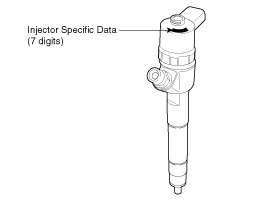
After replacing injector, MUST input the injector specific data (7 digit) of each cylinder into ECM with scan tool.

Common Rail Fuel Injection System operates with extremely high pressure (approximately 1,800bar), so never perform any work on injection system with engine running or within 30 seconds after the engine stops.
Keep cleanly the parts and the working area.
Pay attention to a foreign substance.
Just before installing injector, tube or hose, remove the protect-cap attached on them.
Do not remove injector except for special case.
When installing Injector
- Wash the contact area of the injector and replace the gasket with a new one.
- To protect damage caused by shock, vertically insert the injector into the cylinder head.
- Clean the connecting surface of the injector gasket on the cylinder head before installing the injector.
When installing High Pressure Fuel Pipe
- Do not use again the used high pressure fuel pipe.
- Install the flange nut correctly.
After replacing ECM, MUST input the injector specific data (7 digits) of each cylinder into a new ECM with the GDS.
Remove the injector (Refer to "Removal").
Install the injector (Refer to "Installation").
Perform the "Injector Specific Data Input" procedure (Refer to "Injector Specific Data Input").

Turn the ignition switch OFF.
Connect the GDS to Data Link Connector (DLC).
Turn the igntion switch ON.
Select "Vehicle, Model Year, Engine, System".
Select "Vehicle S/W Management".
Select "Component Change Routine".
Perform the injector specific data input procedure as the message below.
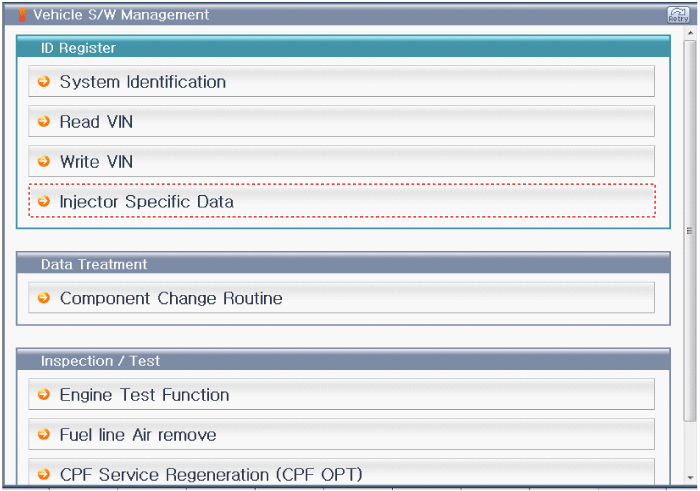
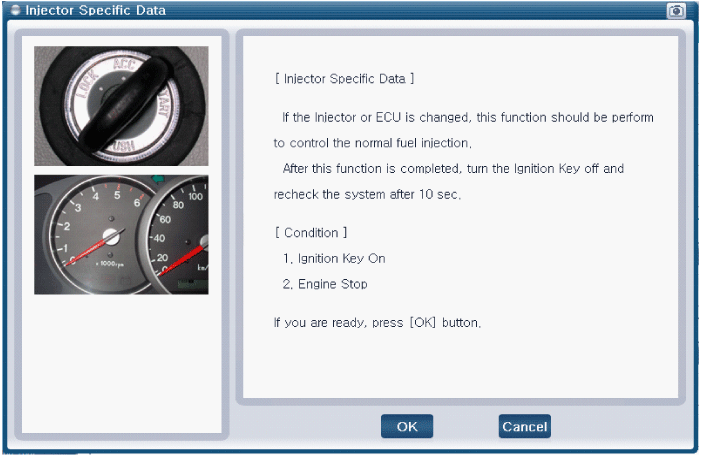
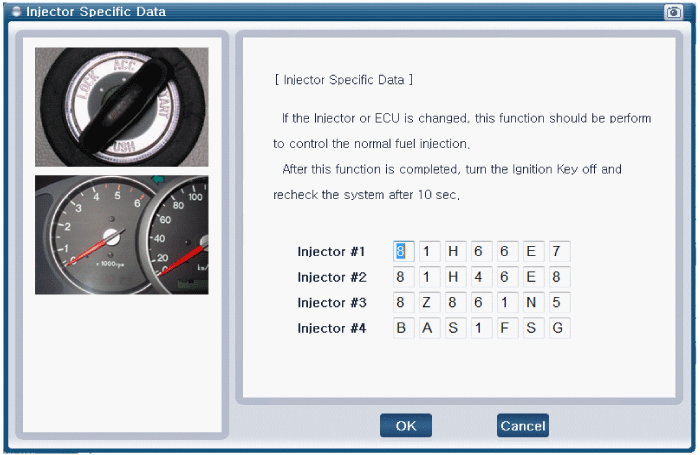
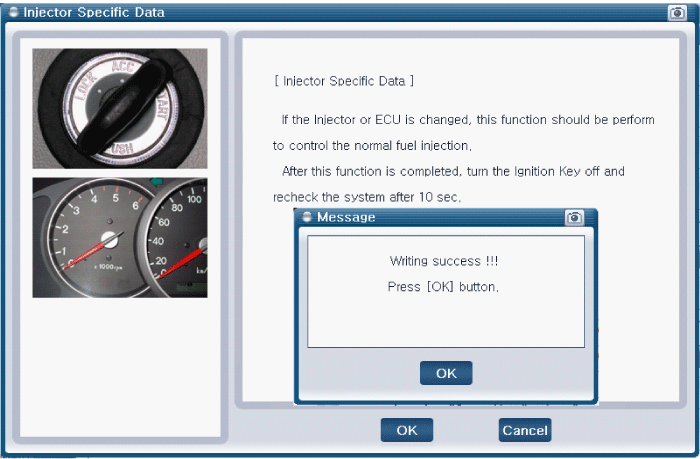
If success message appears, clikc "OK" and then turn the ignition switch OFF.
In about 10 seconds, turn the ignition switch ON and then check the injector specific data memorized in the ECM.
In case of failure, input the injector specific data (7 digits) into ECM again.